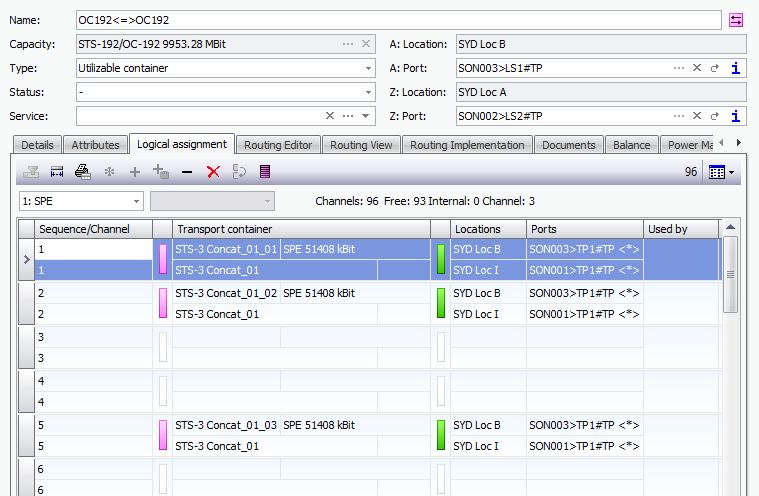Route SONET circuit with Concatenation
Description
In SDH, rates such as STM1, STM4, etc cannot be routed across another higher order rate. These rates are line rates, and it is only the payload, or VC4’s that are routed. In the case of routing a STM1, a single VC4 is routed. In the case of a STM4, 4 x VC’s are routed, and “concatenated” by the STM4 line rate (or port rate). This is defined by the technology, and CM applies the same restriction in order to best document the circuits. Each VC4 can be routed separately.
The same applies to SONET rates. Higher order rates STS-1 to STS-n are basically line rates for 1 to n SPE payload rates. This example shows how to route an STS-3 via a higher SONET rate by using the STS-3 as a concatenation object for 3x SPE’s.
Procedure
1.Create the STS-3/OC-3 Transport Container as a “Concatenation” type:
a.Create a new TC by any standard workflow, and
i.Set the Type: Concatenation;
ii.Select the Capacity: STS-3/OC-3 Standardised SONET rate
iii.If defined (See Example of Use 2), select the desired concatenation (number and type of routing elements to be generated)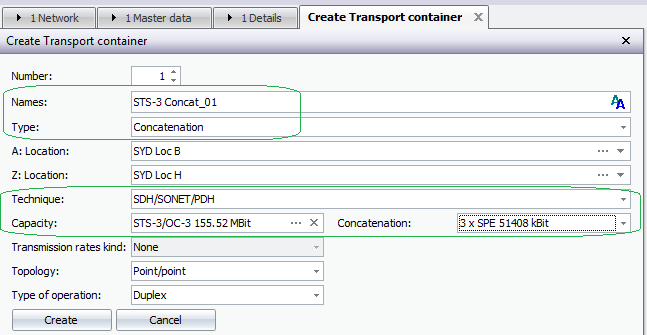
iv.Create;
2.If the concatenation is selected in the Create Transport Container step, the resulting TC will show that 3 x routing elements are created automatically.
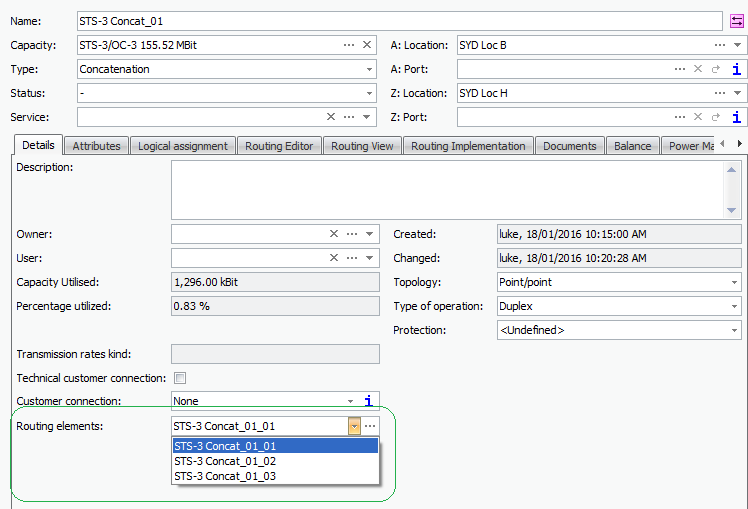
a.Alternatively the routing elements can be created / edited manually:
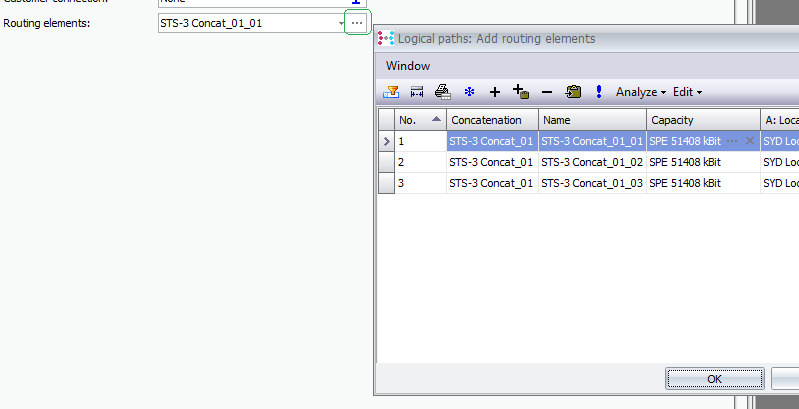
3.Set the end ports of the Concatenation Transport Container:
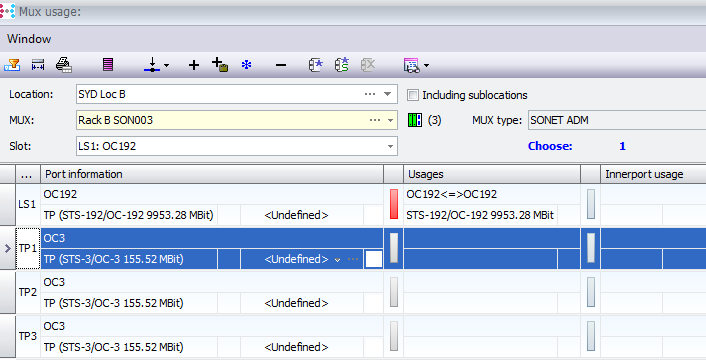
a.On selection, the prompt “Is the port information of the routing elements to be adapted?” (to apply the selected port to the routing elements also) allows the user to also defined the ends of the routed children also. Select “Yes” and repeat for the second port.

4.To route the STS-3, we need to effectively route the 3xSPE routing elements. The simplest method for this is via the Routing editor tab in the STS-3 Concatenation TC detail:
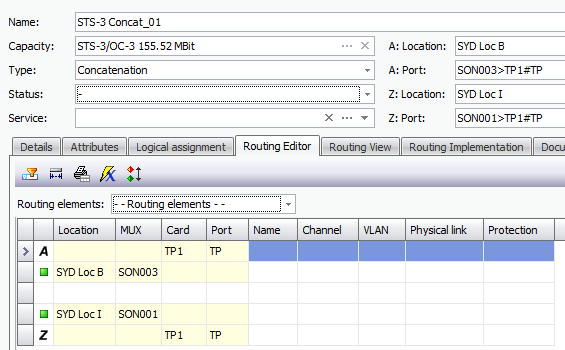
a.Ensure that the option “--Routing elements--” is selected as the object to be routed (note that it is possible also to route individually in the event that one SPE must use a different bearer than another).
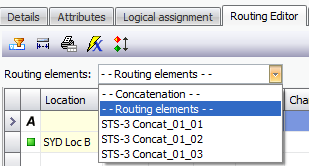
b.The Routing elements can be routed by extending the worker, in this example we use the filter option:
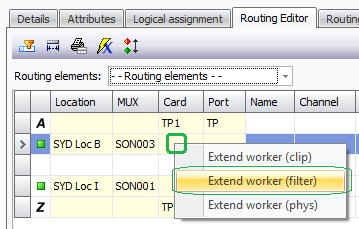
i.Choose the bearer and click “OK”
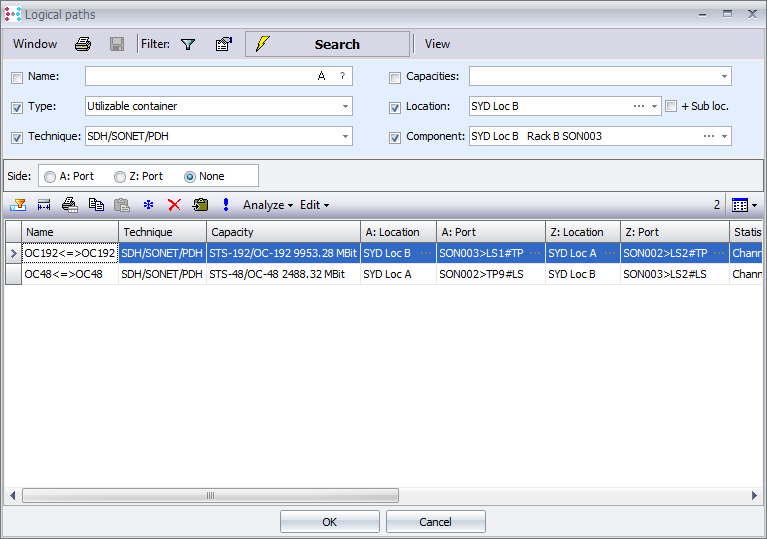
ii.Now select the channels (SPE’s of the bearer that will be used by the SPE routing elements of the STS-3) to use. They do not have to be sequential!! To select multiple, use the shift or control buttons. Note: The order of the selection is remembered by the system, and the routing elements will be assigned in that same order (i.e. if the selection of slots to use is in order slots1, 2, 3, the result will be different than if the slots are selected in the order slots3, 1, 2

iii.This gives:
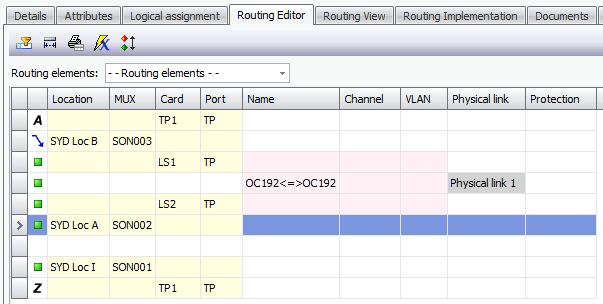
c.Repeat as needed to complete the routing:
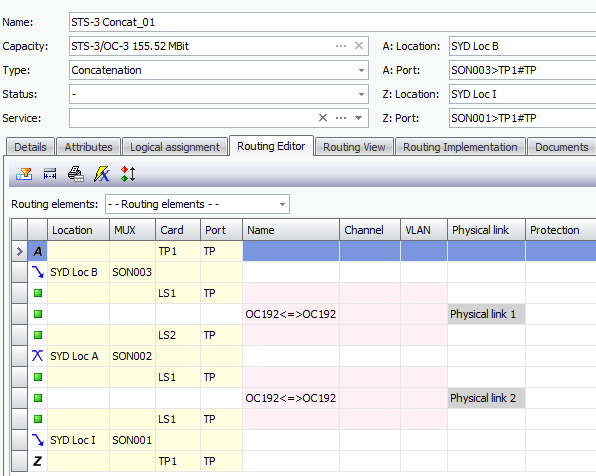
5.The routing and time slot if individual routing elements can also be viewed:

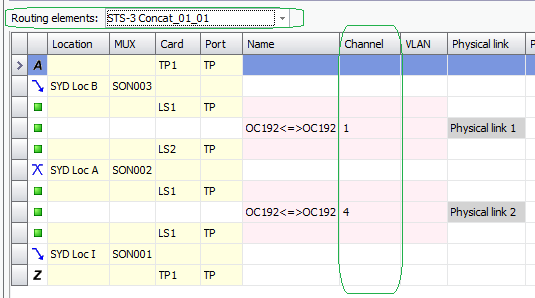
6.The usage of the parent can be viewed in the TC details of the parent:
